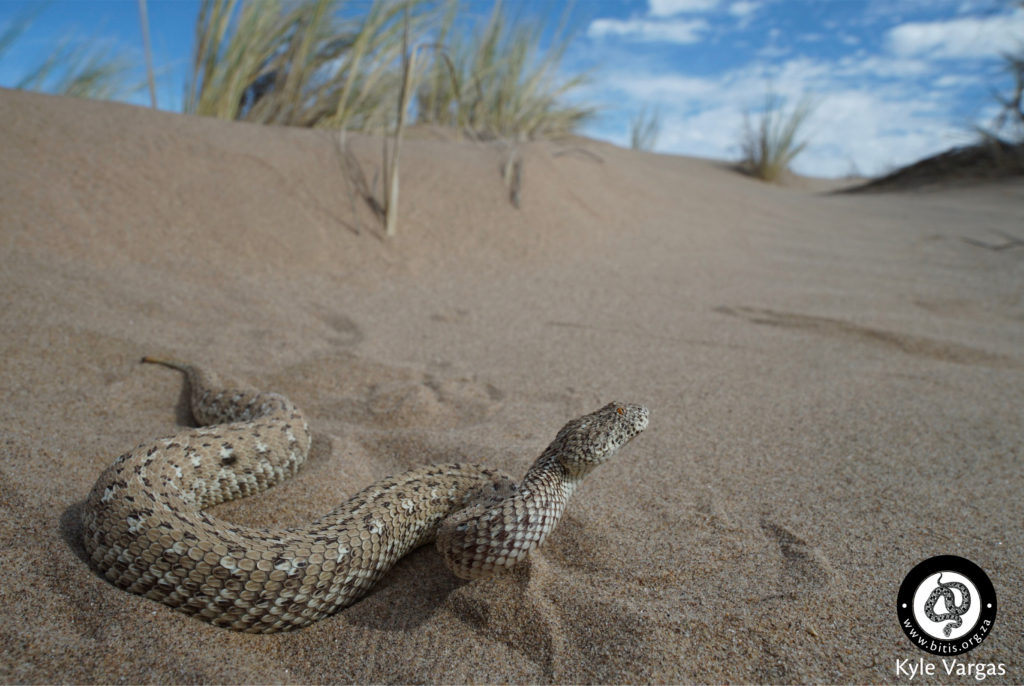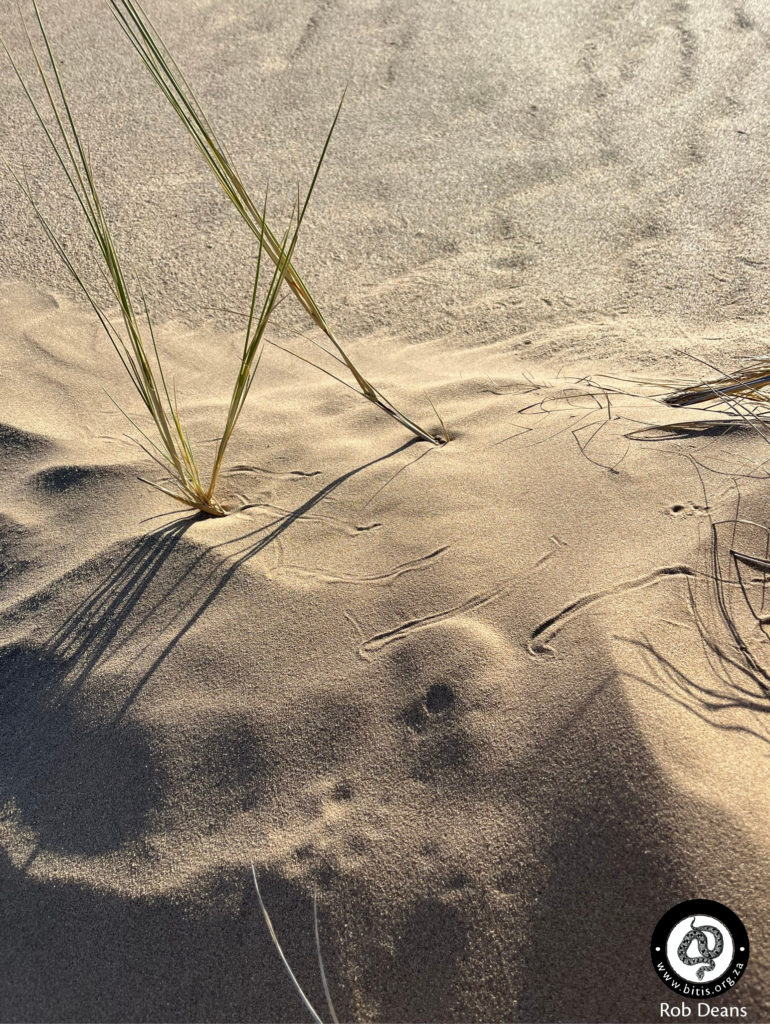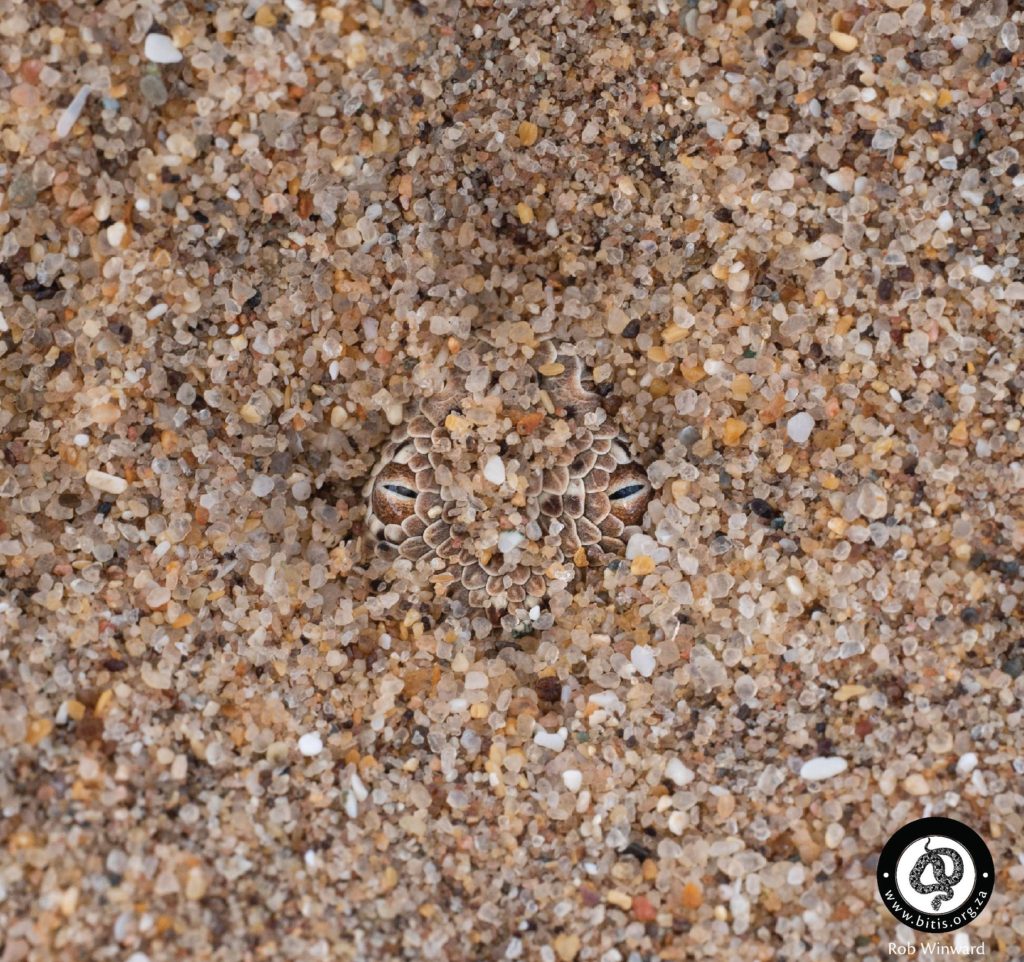Peringueys Adder (Bitis peringueyi)
Previous names
Vipera peringueyi – Boulenger 1888
Bitis peringueyi – Boulenger 1896
Cobra peringueyi – Mertens 1937
Holotype – SAM ZR 1852 – “A single specimen, obtained by Mr. Péringuey in Damaraland, 10 miles east of Walfisch Bay” Namibia. The Holotype is stored at Iziko (the South African Museum) in Cape Town, South Africa. Golay et al. 1993 suggested the specimen may be lost.
Etymology – Named after Louis Albert Péringuey, a South African entomologist who become the director of the South African Museum in Cape Town. Mr. Péringuey collected the first specimen and donated it to Boulenger.
Species history – Louis Péringuey conducted a field trip into Namaqualand and “Damaraland” (actually only between the Orange River Mouth and Walvis Bay) in Namibia in the 1880s. He brought back specimens to George Albert Boulenger in England. Amongst the specimens (mainly geckos and lizards) was a small adder of 25 cm, collected inland of Walvis Bay in Namibia. Boulenger described the species as Vipera peringueyi in a small paragraph where he describes the scalation of the species. Boulenger later transferred it to Bitis peringueyi.
Description – A small adder reaching 33 cm. A sandy-brown to reddish adder with small black and white blotches across the body. Around one third of the population has a black-tipped tail, the rest are lighter than the body. The head is flat and rounded with the eyes situated on top of the head.
Natural habits – A sand-dwelling species that is well suited for life on the dunes. It sidewinds with ease across loose sand and will bury itself in sand in order to avoid the extreme heat as well as ambush prey. The eyes are situated on the top of the head and allow this species to bury the body whilst keeping the eyes exposed.
Venom – A mild cytotoxin causing pain and swelling.








